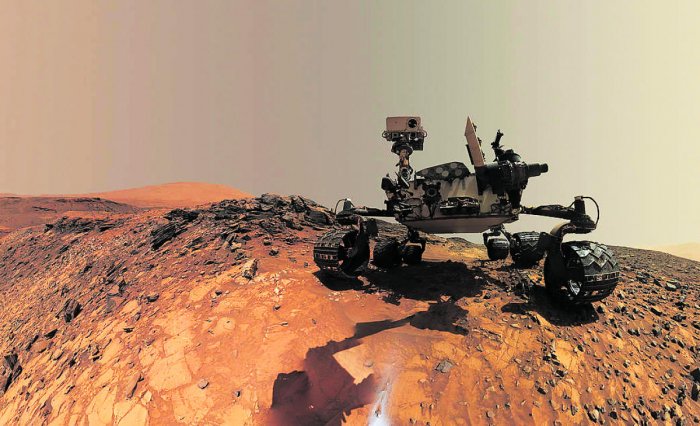NASA’s Curiosity rover has found the highest amounts of clay minerals since its landing on Mars in August of 2012, according to a release of NASA on Wednesday.
Two samples the rover recently drilled at rock targets called “Aberlady” and “Kilmarie” have revealed the highest amounts of clay minerals ever found during the mission, said the release.
Both drill targets appear in a new selfie taken by the rover on May 12, the 2,405th Martian day of the mission.
This clay-enriched region, located on the side of lower Mount Sharp, stood out to NASA orbiters before Curiosity landed in 2012.
Clay often forms in water, which is essential for life. Curiosity is exploring Mount Sharp to see if it had the conditions to support life billions of years ago, according to the mission team.
The rover’s mineralogy instrument, called CheMin (Chemistry and Mineralogy), provided the first analysis of rock samples drilled in the clay-bearing unit. CheMin also found very little hematite, an iron oxide mineral that was abundant just to the north, on Vera Rubin Ridge, according to NASA.
It is likely that the rocks in the area formed as layers of mud in ancient lakes, something Curiosity also found lower on Mount Sharp. Water interacted with sediment over time, leaving an abundance of clay in the rocks there, said NASA.
Amid this new drilling and analyzing, Curiosity used its black-and-white Navigation Cameras to snap images of drifting clouds on May 7 and May 12, which are likely water-ice clouds about 31 kilometers above the surface, according to NASA.
The mission team has been trying to coordinate cloud observations with NASA’s InSight lander, which is located about 600 kilometers away. Capturing the same clouds from two vantage points can help scientists calculate their altitude, said NASA.
NASA’s Curiosity rover finds clay minerals on Mars




